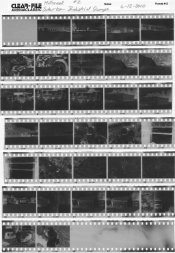Worker 11811
Member
I would sure like to know what exactly is going on here. Is the fogging continuous and does it start at the very edge, does fog bloom around the sprocket holes (of course there is no film in the actual holes), run the entire length of the roll, along both the top and bottom edges, or just one?
Attached image: A scan of one roll of negs in question.
I have other rolls from the very same reel of bulk film, from the very same loader, shot, one after another in the very same camera. One roll does it, the other does not.
Although it's not always possible, I always try to go under a doorway or, at least, find a tree to stand under when I reload the camera.
I always keep the film in a plastic container, saved from a roll of store-bought film. I often keep them in a pocket but they bare carts never roll around in my pocket without being in a container.
Some rolls do this. Some rolls don't. When I find a roll that does it, I set the cart aside and use a new one.
I'd sure like to know if it is because I am doing something wrong because I could save some time, money and trouble if I knew what I was messing up.
Still, I can't help but to think that they get old, wear out and need to be replaced after three or four uses.
Maybe I can put a thin strip of black tape around the rim of the cart after I load it. :shrug:
Minor light leaks don't bother me at all, as long as they don't affect images. I wish they had DX coding, as I use P&S cameras without manual ISO override.
BTW: DX coding can be faked. Some adhesive backed aluminum foil tape, some nail polish and some patience is all it takes.
Attachments
Last edited by a moderator:












